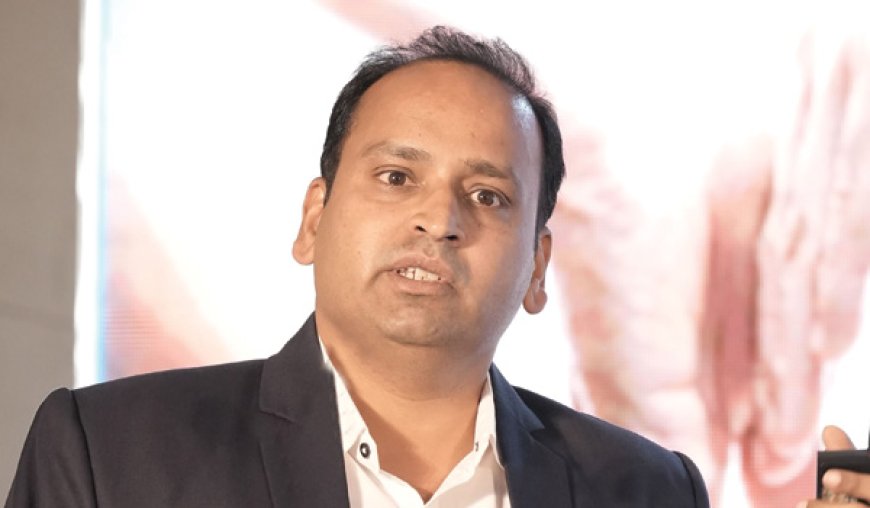Given the diverse conditions in India, we employ various methods to ensure optimal mat usage.
Prasanna Kumar, CMO, ISOTRACK Innovative Infrastructure Solutions As we see a good shift in momentum in OEMs, how you see your company’s growth in India? As a manufacturer, we’ve tapped into a product that’s had a successful 12-year run in

As we see a good shift in momentum in OEMs, how you see your company’s growth in India?
As a manufacturer, we’ve tapped into a product that’s had a successful 12-year run in the European market. Acquired 4-5 years ago, it holds immense potential within India, particularly within the booming infrastructure industry. However, one of the major setbacks faced here is the halting of work at different stages, especially during the rainy season when operations are disrupted for about 2-3 months. Our solution is a game-changer in this scenario. India promises a great potential owing to the recent announcements and growth projections in the Infrastructure sector and this strengthens our faith in aiming to capture the subcontinent and then aim to start manufacturing as well.
Which materials are these mats made of?
These materials are high-density polyethylene of compression-grade quality, forming a composite mat. This designation arises from the incorporation of two distinct components, meticulously crafted through advanced robotic systems employing highly sophisticated machinery. Crafted from the cutting-edge ultra SGB material, they are exclusively designed for temporary use for varied sectors which entail lot of vehicle and machinery movement in the absence of roads but cannot be a permanent fixture.
It is produced in Europe?
At present, our focus lies in enhancing value addition within India. This initiative aligns with our goal to promote ‘Make in India.’ Currently, our process involves importing the product and subsequently integrating accessories within the country.
What are your company’s plans for next year?
We have concrete plans in response to the setbacks caused by the Covid period, which hindered our momentum for three years. Presently, the market is showing signs of resurgence. This year, we’ve already observed promising traction, having sold between 1500 to 2000 mats. Recognizing our strong potential, we envision expanding further. Upon reaching a significant quantity threshold, our strategy includes establishing a manufacturing plant in India.
With raw material prices fluctuating now and then how do you see it impacting your business?
At present, as manufacturing isn’t taking place on-site, we lack direct control over it; instead, it’s managed in Europe. Our primary challenge lies not so much in the raw materials, but in the fluctuations within the foreign exchange market. This currency volatility significantly impacts our ability to price our products effectively.
What are your after-sales initiatives?
Ensuring comprehensive training is a cornerstone of our approach, whether it’s for rental companies or individuals making a purchase. Prior to appointing any rental partner, we provide extensive training sessions covering the installation of mats, necessary care protocols, and essential precautions. This step is fundamental in ensuring that every partner understands our standards and procedures. Moreover, our commitment extends beyond the initial training. We conduct regular site visits to supervise the service provided. It’s not merely about delivering mats to the end client; our supervisors actively engage in field visits to observe how the mats are utilized. Given the diverse conditions in India, we employ various methods to ensure optimal mat usage. Our aim is to prevent damage and promote the correct implementation of safety measures. This proactive approach enables us to support our partners and maintain the quality and effectiveness of our products in different environments.
This particular product is specially focused on rural roads?
It’s not specifically designed solely for rural areas; rather, it’s intended for providing access where traditional road construction is unfeasible. This could include areas with uneven terrain or dense forests where regulatory constraints prevent road building. These mats are extensively utilized in such scenarios.
You have a legacy of 40 years. What are your growth priorities for the next 5-10 years? What are the markets you are targeting?
Currently, our primary focus lies in marketing our product within the Indian market, with a goal to establish a manufacturing plant in India. This isn’t an immediate endeavor, but rather a projected plan within the next 4 to 5 years, contingent upon achieving substantial market growth – aiming for approximately 5000 mats per year. Presently, our output stands at 2500 mats annually. Once we achieve the target of producing 5000 mats per year, we intend to explore the possibility of setting up a manufacturing facility within India itself. This aligns with the ethos of the “Make in India” initiative and will help localize production to better cater to the Indian market.
Hits: 3








